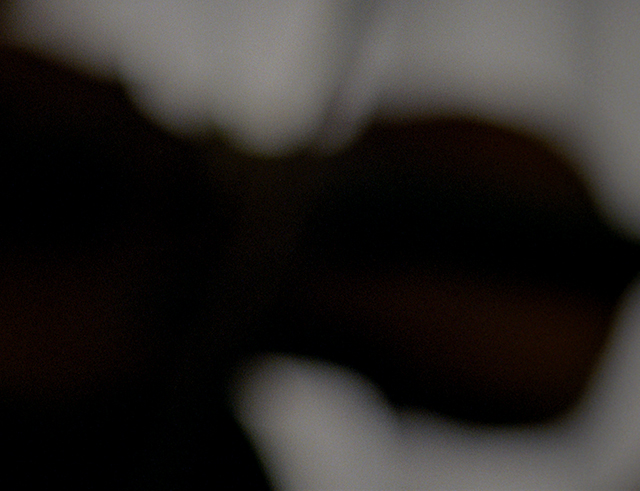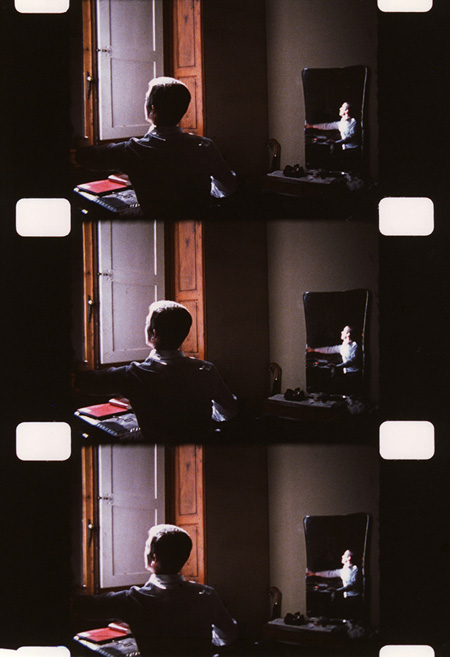From the Notebook of ... opens with a series of instructions, written by Beavers in neat blue script: ‘Close the window shutting to a crack, film my reflection in the mirror as my hand moves in front of the mirrored light.’ In the next sequence, the actions are performed for the camera: Beavers opens and shuts a window, and his face moves in and out of the light. This same effect of rhythmic obfuscation and revelation is achieved through the frequent use of props such as mattes or color filters, which frame and tint the field of vision. These techniques reference the camera’s own framing and representing function.
The film was shot in Florence and takes as its point of departure Leonardo da Vinci’s notebooks and Paul Valéry’s essay on da Vinci’s process. These two elements suggest an implicit comparison between the treatment of space in Renaissance art and the moving image. The film marks a critical development in Robert Beavers’ work in that he repeatedly employs a series of rapid pans and upward tilts along the city’s buildings or facades, often integrating glimpses of his own face. As Beavers’ notes in his writing on the film, the camera movements are tied to the filmmakers’ presence and suggests his investigative gaze. (Henriette Huldisch)

